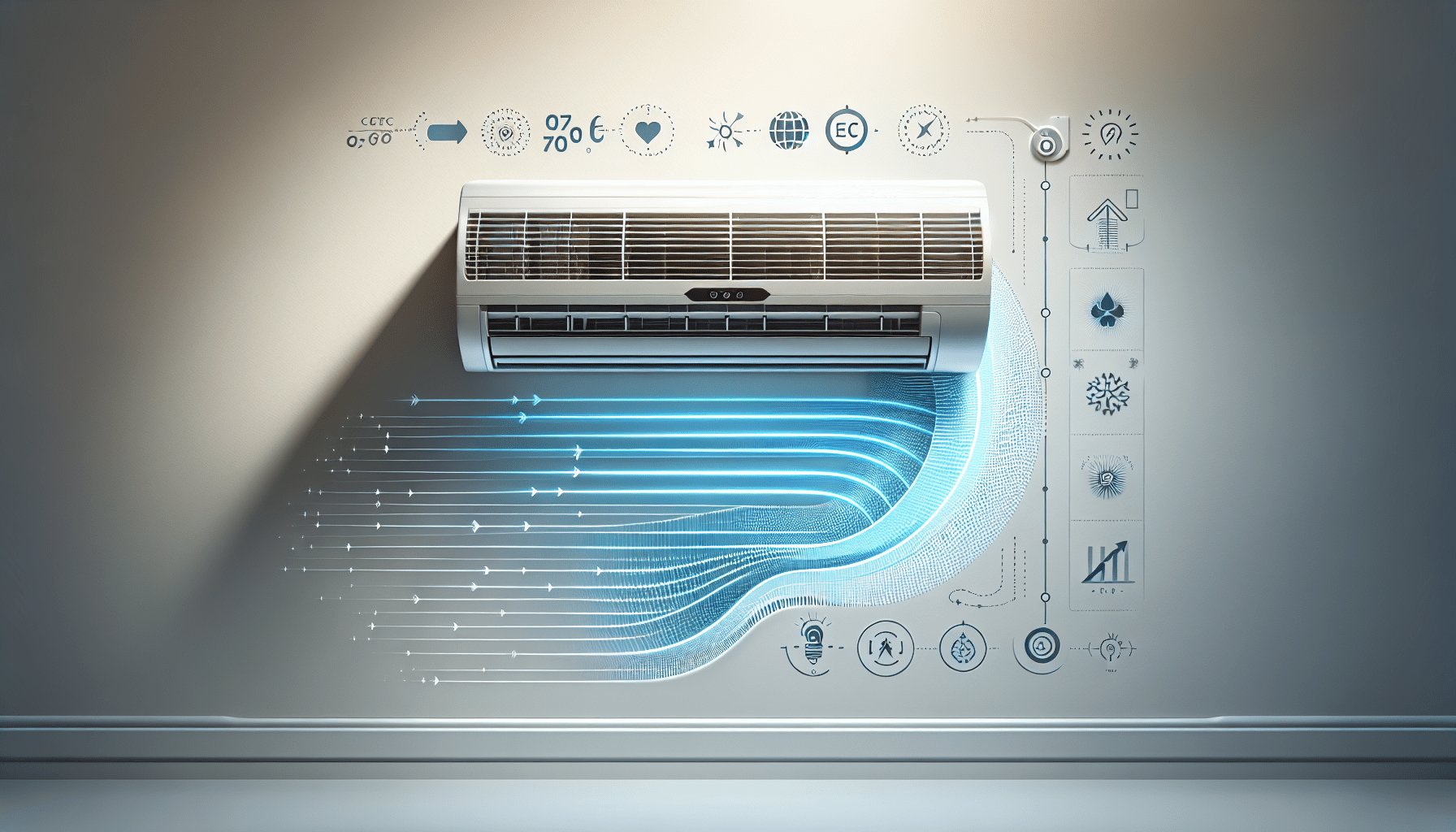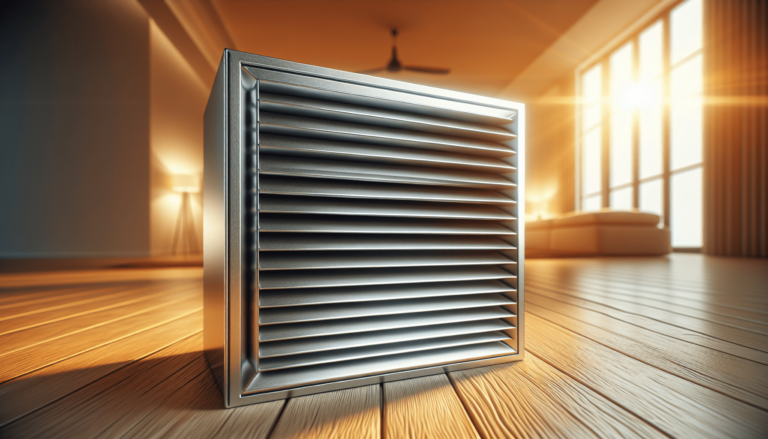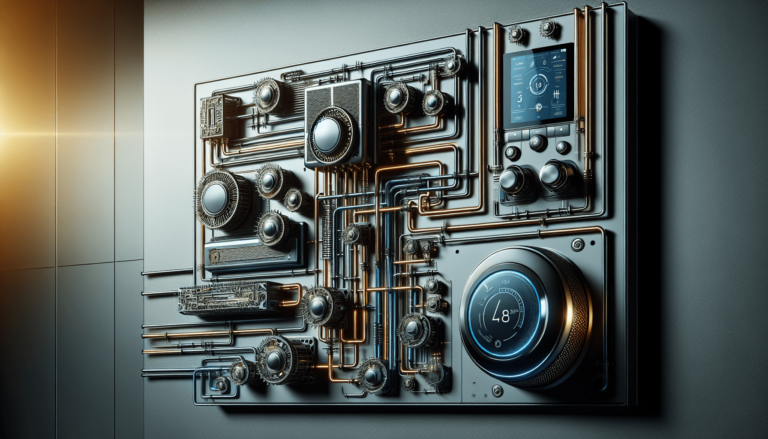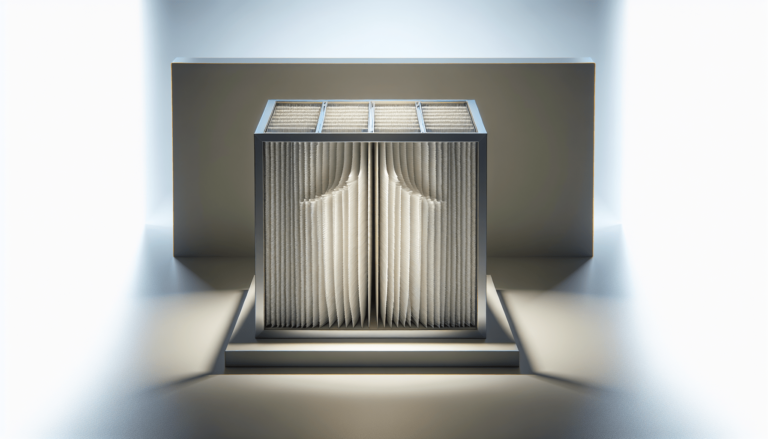

HVAC Services
Get Professional Repairs From The Area's Trusted HVAC Technicians. Ask About Our Services! We Offer Professional Heating & Cooling System Repairs And Guarantee Long-Lasting Results.
Got Question? Call us: (850) 678-2665Financing
All About SEER Ratings And Efficient Cooling
Discover how SEER ratings can optimize your home's cooling efficiency and save money. Learn the secrets of staying cool without breaking the bank. Read more now!

Have you ever wondered how to keep your home cool without feeling like you’re feeding coins into a never-ending slot machine? The answer might lie in understanding the SEER ratings for your air conditioning units. SEER ratings, or Seasonal Energy Efficiency Ratio ratings, can be a bit like deciphering a cryptic puzzle, but once you get the hang of it, you’ll know exactly what to look for to optimize your home’s cooling efficiency and save some money along the way.

What Is a SEER Rating?
Think of a SEER rating as a report card for your air conditioner. It tells you how energy efficient your cooling system is over an entire season. The higher the SEER rating, the less energy your AC unit will use to provide the same amount of cooling. It stands for Seasonal Energy Efficiency Ratio and is calculated by taking the cooling output during a typical cooling-season and dividing it by the total electric energy input during the same period.
Why SEER Ratings Matter
Why should you care about these numbers? Well, a higher SEER rating can dramatically lower your energy bills. Imagine stepping out of an intense summer afternoon and feeling that delightful, cool burst of air without the pang of guilt for your electric bill. Plus, the environmental impact can’t be ignored. More efficient units mean less strain on our power grids and fewer greenhouse gases released into the atmosphere.
How SEER Ratings Are Calculated
You might picture a group of scientists in white lab coats running tests, and you wouldn’t be far off. Once upon a time for each unit, specific tests are conducted to measure energy usage and cooling capacity across various temperatures. They then crunch the numbers to get the SEER rating, akin to figuring out how many miles per gallon you get in your car. Essentially, the higher your MPG (or SEER in this case), the more efficient the machine.
The Scale: What Are Good SEER Ratings?
If you’re wondering where your current AC lands on the SEER scale, it’s essential to compare it to today’s standards. Generally, the minimum SEER rating for air conditioners in the U.S. is 14, but modern units can go much higher.
| SEER Rating | Efficiency Level | Remarks |
|---|---|---|
| 14-15 | Basic | The minimum standard, decent efficiency. |
| 16-19 | Moderate | Offers improved efficiency. |
| 20-25 | High | Excellent efficiency and energy savings. |
| 26+ | Premium | Maximum efficiency for ultimate savings. |
Where Does Your Unit Stand?
Take a peek at your AC unit’s label or manual. If your system is older, it might be lagging behind today’s efficiency standards. Those units with a SEER rating below 14 might be costing you more in the long run, not just in energy bills but in maintenance and repairs.
Why Higher SEER Units Are Worth the Investment
It’s tempting to stick with your current setup, especially when the idea of replacing an AC unit comes with dollar signs dancing in your mind. However, consider the long-term benefits.
Cost Savings Over Time
A higher SEER rating means less energy consumption. While the upfront cost might be steeper, the return on investment often speaks for itself. For instance, upgrading from a SEER 10 unit to a SEER 16 unit can save you upwards of 60% on your cooling costs. You’ll start noticing those savings quickest during the scorching summer months when your system is working overtime.
Environmental Impact
Let’s not forget our planet. A more efficient air conditioning system uses less electrical power, reducing the overall demand on power plants and the associated carbon emissions. It’s a small step towards a larger, cleaner future.
Choosing the Right SEER Rating for Your Home
While it might be thrilling to aim for the highest SEER number you can find, it’s important to choose a rating that makes sense for your specific needs and climate.
Consider Your Climate
If you’re living somewhere with mild summers, investing in a unit with a SEER rating 25+ might be overkill. In contrast, living in hot and humid areas like Niceville, Florida, a higher SEER rating could be life-altering.
Your Home’s Insulation
No matter how high your SEER rating is, poor home insulation can make your unit work harder. Think of it like trying to keep water in a leaky bucket. Upgrading your insulation can be just as important as choosing a high SEER unit.
Energy Audit
Conducting a home energy audit can help you understand where you’re losing energy and how efficient your current system is. This will give you a clearer idea of whether upgrading to a higher SEER-rated air conditioner will truly benefit you.

The Role of Maintenance in SEER Efficiency
Even the highest-rated units need a little TLC to stay at peak efficiency. You wouldn’t buy a Ferrari and never change the oil, right? Similarly, regular maintenance can keep your AC running smoothly.
Regular Filter Changes
Dirty filters can make your AC unit work harder, lowering its efficiency. Changing filters every 1-3 months can help maintain your system’s SEER rating.
Annual Tune-Ups
Scheduling yearly check-ups with a professional can catch small issues before they become expensive problems. Many companies, like Tempacure Heating and Air Conditioning in Niceville, FL, offer maintenance packages that include thorough inspections and tune-ups.
Cleaning the Coils
Over time, dust and dirt can accumulate on your AC coils, which can hinder performance. A professional cleaning can help keep your SEER rating where it should be.
The SEER Rating and Rebates
It might feel like you’re paying a premium for higher SEER units upfront, but don’t forget to look into available rebates and discounts.
Manufacturer Rebates
Many AC manufacturers offer rebates on their higher SEER units. These rebates can significantly lower the upfront cost, making that efficient unit more affordable.
Government Incentives
Various state and federal programs provide incentives for upgrading to energy-efficient appliances. Check the Database of State Incentives for Renewables & Efficiency (DSIRE) for details on rebates in your area.

Partnering with the Right Professionals
Choosing and maintaining an efficient cooling system isn’t a DIY job. Partnering with professionals can make a huge difference.
Expertise Matters
Experienced HVAC professionals can provide personalized advice based on your home’s specific needs. They’re familiar with the nuances of cooling systems and can help you make the best decisions.
Installation and Maintenance
Proper installation is crucial for maximizing SEER efficiency. It’s not just about buying the right unit; it’s about ensuring that unit is installed correctly. Regular maintenance checks by professionals like those at Tempacure Heating and Air Conditioning ensure your system stays in top shape.
Local Recommendations
If you’re living in Florida, Tempacure Heating and Air Conditioning is a great option. With their knowledge of local climate conditions, they can recommend systems that will keep you comfortable and efficient.
Tempacure Heating and Air Conditioning
325 Cedar Ave S
Suite B
Niceville, FL 32578
(850) 678-2665
https://tempacurehvac.com/
Real-Life Benefits
It’s one thing to read about SEER ratings and efficiency, but how does this translate in real life?
Case Study 1: The Summer Saver
Jane from Florida switched from a SEER 13 unit to a SEER 20 unit last year. Not only did she cut her energy bills by nearly 40%, but her home has stayed cooler during the hottest months with less frequent maintenance.
Case Study 2: Eco-Friendly Choice
Tom from Tallahassee wanted to reduce his carbon footprint. He chose a SEER 25 unit. Alongside other eco-friendly home upgrades, his family’s energy consumption has dropped, and they’re contributing to fewer CO2 emissions.

Common Misconceptions About SEER Ratings
Sometimes, the figures and facts get confused or misinterpreted. Let’s debunk a few myths:
Myth 1: Higher SEER Always Means Higher Cost
While a higher SEER unit may have a higher initial price tag, the long-term savings on energy often offset this cost. Many see a return on investment within just a few years.
Myth 2: SEER Rating Alone Dictates Comfort
While SEER is a critical factor, it’s not the only one. Proper installation, home insulation, and regular maintenance all play roles in achieving full comfort and efficiency.
Myth 3: Older Units Can’t Be Efficient
Thinking that only new units can be efficient isn’t entirely accurate. With proper maintenance and possibly refitting with more modern parts, some older units can still achieve decent efficiency.
Future Trends in SEER Ratings and Cooling Technology
Cooling technology is ever-evolving. Keeping up with trends can ensure you make informed decisions.
Smart Technology Integration
Many modern units come equipped with smart technology, allowing you to control your AC from your phone. Imagine adjusting your home’s temperature from your office!
Variable-Speed Compressors
Newer models often feature variable-speed compressors. Unlike traditional units that run at full speed, these can adjust their output to match the cooling demand, enhancing efficiency.
Eco-Friendly Refrigerants
More companies are switching to eco-friendly refrigerants, which are better for the environment and often contribute to better system efficiency.
Making Your Next Move
Understanding SEER ratings unlocks a path to efficient cooling. It demystifies the numbers, offering a clear direction towards a more comfortable home and lower bills. The steps you take today could mean enjoying more leisurely, cool, and environmentally responsible days in the future. For the best advice and service, reaching out to a local expert like Tempacure Heating and Air Conditioning could be the pivotal step in achieving your home’s cooling potential.
So, as you stand by your air conditioner, contemplating its future, consider the powerful knowledge you now hold about SEER ratings. With a bit of research and the right professional guidance, you’ll transform those daunting summer days into a breeze—literally and figuratively.







